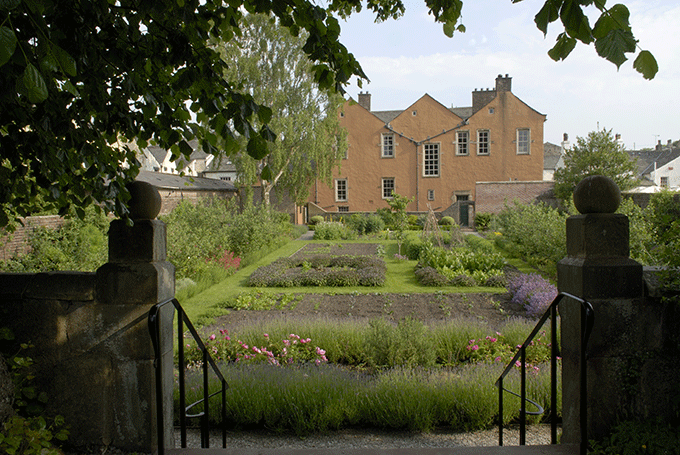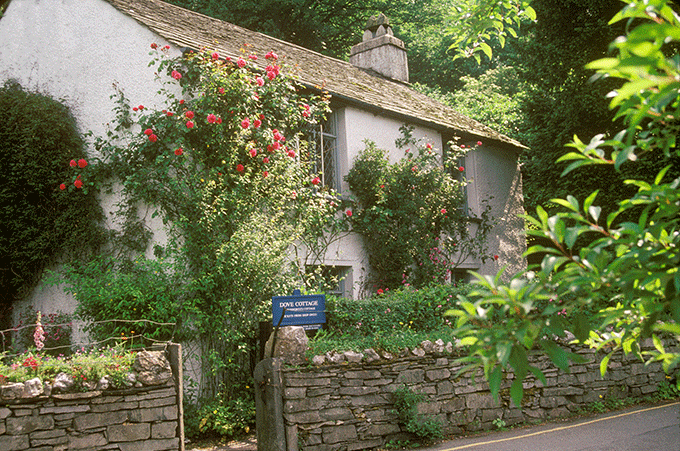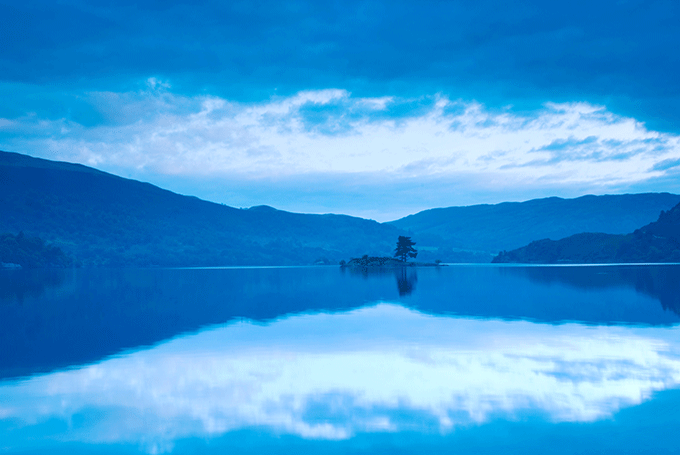You only have to read the prose of our nation’s favourite poet to see how much William Wordsworth was taken by the land of his birth.

Download your FREE Cumbria guide
It was in his homeland in and around the Lake District that our great poet William Wordsworth developed his love of nature and launched the Romantic school, earning himself and fellow writers, such as Samuel Taylor Coleridge and Robert Southey, the nickname of the ‘Lake Poets’. It was also in this land of his childhood that he found much of his inspiration for his later work. Here is our guide to Wordsworth’s Cumbria:
Wordsworth House and Garden
Wordsworth was born in the town of Cockermouth, just outside the Lake District National Park, in 1770 and spent his early years, along with his four siblings, Richard, John, Christopher and Dorothy (who spent her adult life by her brother’s side), in the splendid surroundings of a Georgian house, which is now known as Wordsworth House. Today you can step back in time to the Georgian era at Wordsworth House as costumed servants bring the period to life. The house has been fully restored to how it would have been in Wordsworth’s time, thanks to the National Trust. Opposite Wordsworth House you’ll also find a memorial to Wordsworth, which was unveiled in 1970.
Penrith
William spent much of his childhood in Penrith, which was where his mother was from – he even attended the Dame Birkett School here for a year from 1776 to 1777; incidentally the same school as his future wife, Mary Hutchinson, whom he knew during his schooldays. Wordsworth’s grandfather owned the Old Moot Hall in Penrith where the Arnison’s shop now stands. It was at his grandparents’ home in the town that William’s mother saw out the last of her days. She had been travelling back to the family’s home in Cockermouth after visiting a friend in London when she fell ill and stopped at her parents’ home en route. Here she was confined to her bed for two months until eventually succumbing to suspected pneumonia.
Hawkshead
From 1779 until 1787 William attended Hawkshead Grammar School – his name is carved into one of the desks – where his aptitude for poetry really flourished as his headmaster encouraged him in his writing. It was while at school here that Wordsworth began to take long excursions into the countryside.

Grasmere
It was on a tour of the Lake District, in the company of his brother John and Samuel Taylor Coleridge, that Wordsworth discovered Grasmere and a lovely house called Dove Cottage, which he and Dorothy moved into shortly afterwards. The house had once been a pub known as the Dove and Olive Bough but for Wordsworth it was a family home; he lived there for eights years and after marrying Mary in 1802, three of their five children were born there. The family later moved to Allan Bank, also in Grasmere, the town that Wordsworth described as: “the loveliest spot that man hath ever found”. The house opened to the public in 2012. Both William and Mary are buried in the churchyard of St Oswald’s Church in Grasmere.

Ullswater
Arguably Wordsworth’s most famous poem is Daffodils, which opens with the haunting line “I wander’d lonely as a cloud” and is considered by many to be the definitive Lake poem. A love letter to the landscape, it describes “A host, of dancing daffodils; along the lake, beneath the trees; ten thousand dancing in the breeze.” It’s not clear exactly where he was talking about but many believe it to be in the beautiful setting of Ullswater – inspired by a walk Wordsworth took there with Dorothy, which she wrote of in her Grasmere Journal.
Rydal Mount
In 1813 William and Mary moved to Rydal Mount, which is now owned by their ancestors, where they stayed until their deaths in 1850 and 1859. The house is now open to the public and you can visit the poet’s attic study, which he used during his time as Poet Laureate. Next to St Mary’s Church, also in Rydal, is Dora’s Field, a rash field that Wordsworh bought with the intention of building a house, which now (rather fittingly) boasts a beautiful array of daffodils.
Download your FREE Cumbria guide
Related articlesThe Lake District and Beatrix Potter country |
Click here to subscribe! |
|
||||||||||||||







 © 2024
© 2024